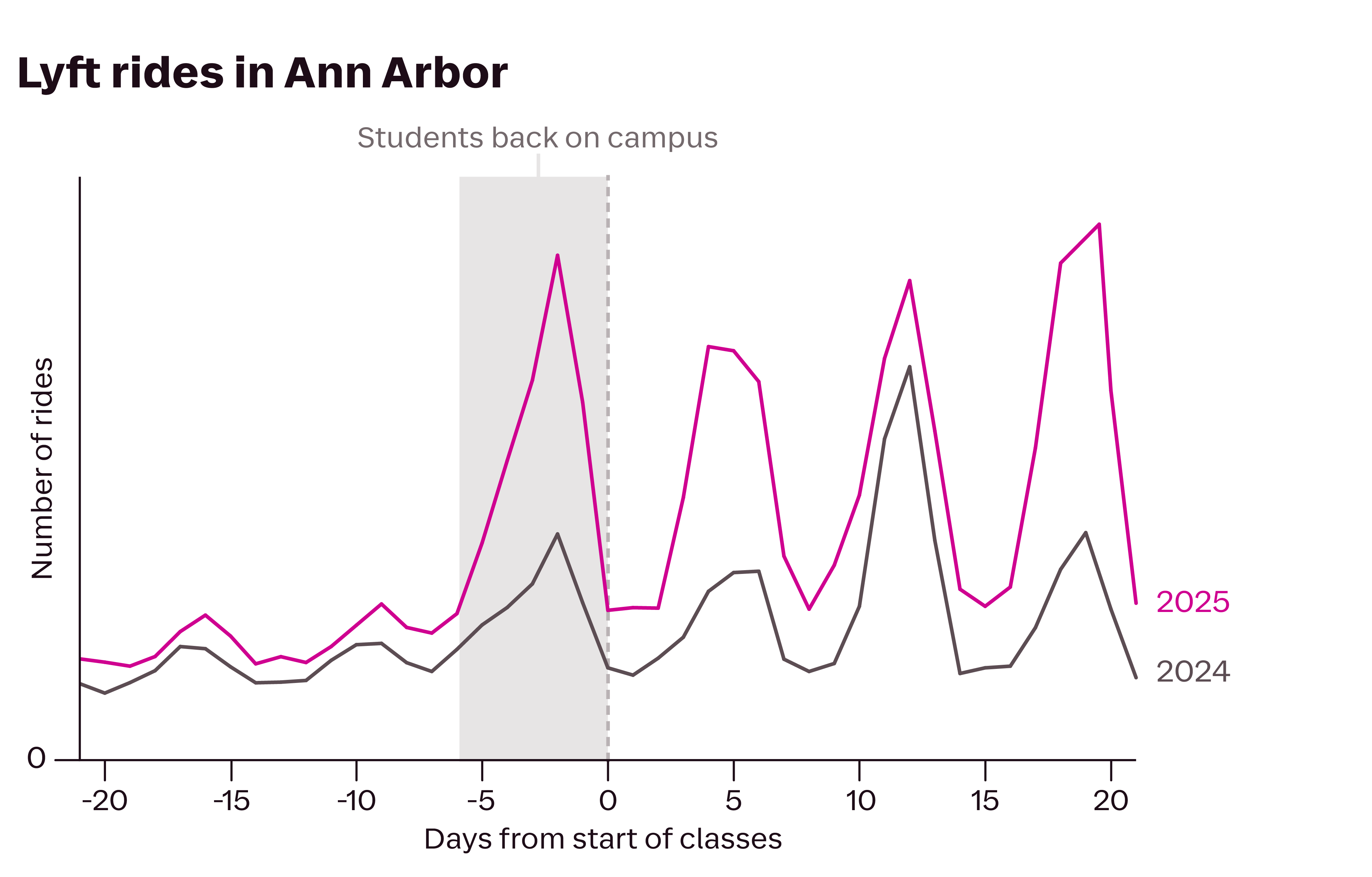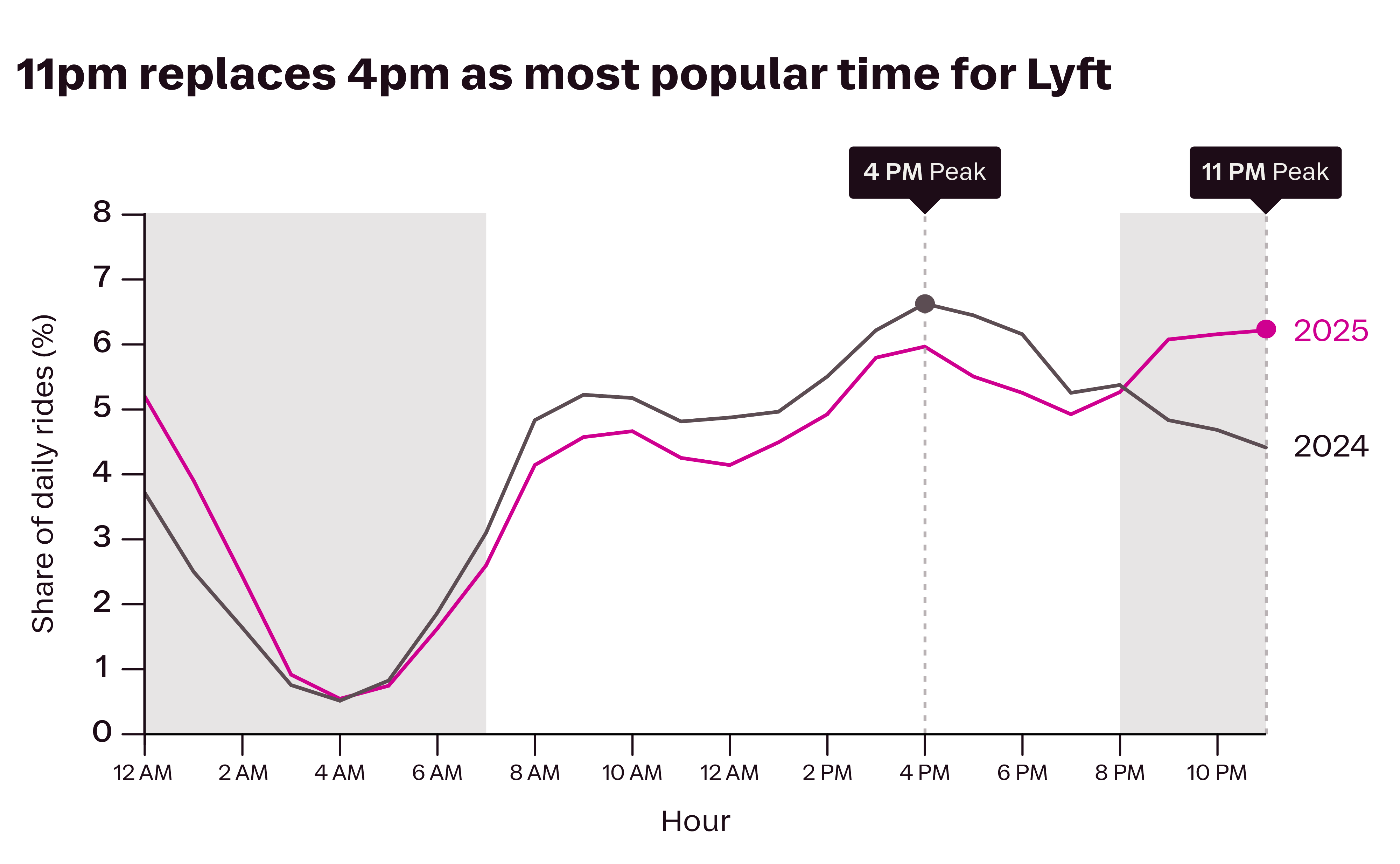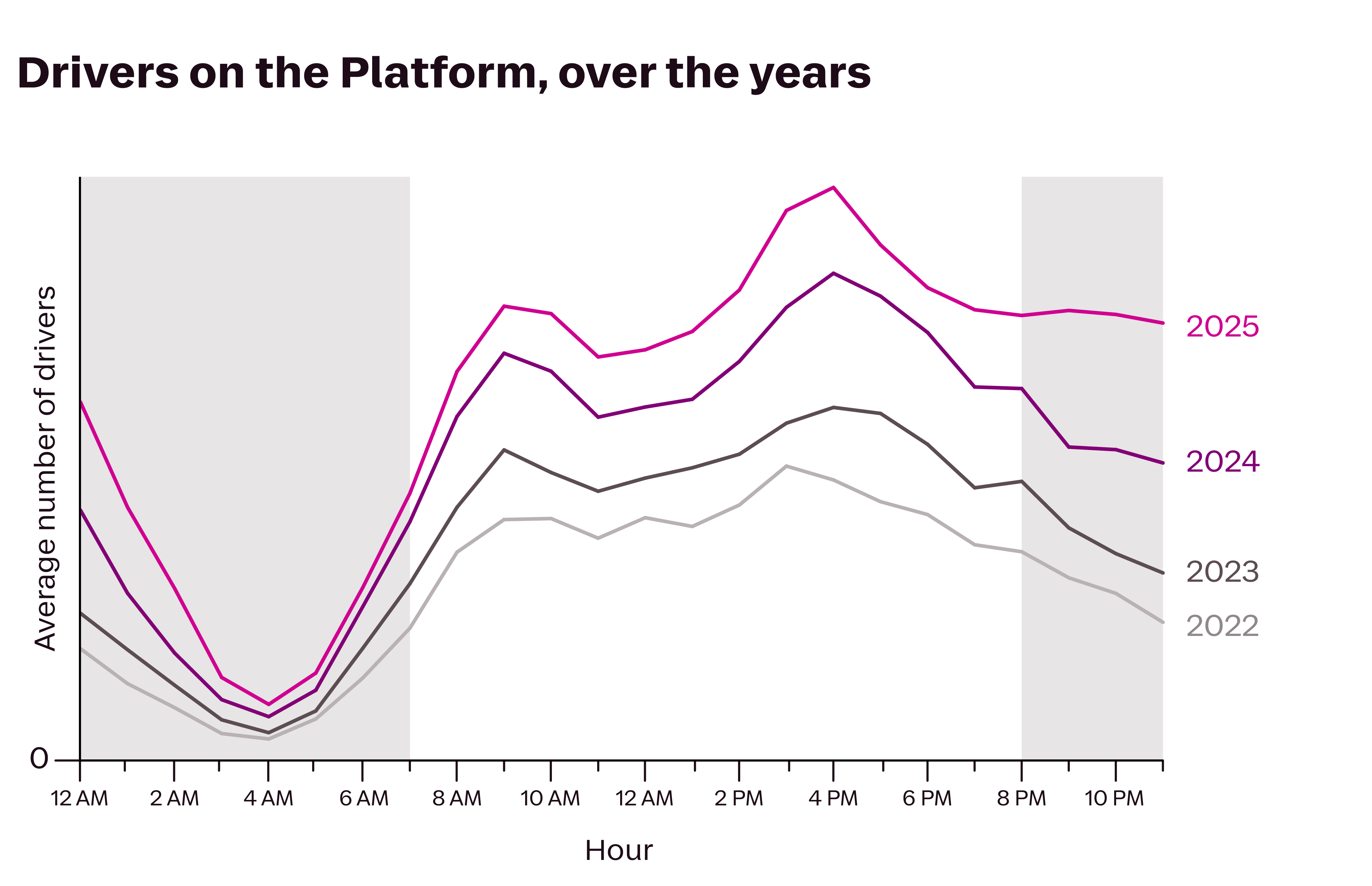
Every August, when classes restart at the University of Michigan, Ann Arbor comes alive. No one knows this better than drivers like David Duncker, who has been driving with Lyft since 2018. “Summer is a drought in Ann Arbor,” explains Duncker. “The academic year is when you pay the bills.”
But this year, Duncker has noted that something is different. “It’s non-stop rides on Lyft,” he claims. “One after another. I used to log off early on slow days, but so far the rides keep coming.”
Duncker is on to something: Starting July 1, the University of Michigan contracted Lyft to provide students with a new curb-to-curb late-night transportation option to complement its existing offerings. With the Night Owl Rides by Lyft program, students can get $4 off any ride within the service area, between 8 p.m. and 7 a.m. daily.
Students have themselves to thank for the program, as the Central Student Government first reached out to Lyft to learn about partnership opportunities. According to Jake Frederick, former vice president of the organization, the late-night program that students relied on previously would pick up and drop off multiple students on the way to any destination. “Students with the resources to call rideshare did so, while other students were left waiting,” explained Frederick, who is pleased with how the program has flattened that disparity.
Just three weeks into the new semester, the program has had dramatic results: Thousands of students have entered the program, and Lyft rides in Ann Arbor are roughly twice the level they were in 2024 and nearly three times what they were in the evening hours — when the program is active.

In fact, 4 p.m. used to be the most popular time for people to take Lyft rides in Ann Arbor as riders went home from work, to afternoon classes, or to grab food. But now it’s 11 p.m. As a self-proclaimed night owl, Duncker usually starts driving around 7 p.m. and sees students using Lyft to get across campus, to work, and home from local bars.

The program has meant more earnings for drivers like Duncker, who have been busier than ever before. “I’ve opened the app to see that there are more Lyft drivers in the region — a lot more than there used to be,” Duncker says.

More drivers on the platform means shorter wait times for riders, and shorter wait times for riders leads to more demand, which leads to — you guessed it — more drivers on the platform. In fact, wait times for Lyft rides in all of Ann Arbor are already down one minute since 2024. This is a positive feedback loop that benefits the entire community of Ann Arbor — saving students precious study time and helping drivers earn more. Go pink 🤝 Go Blue.